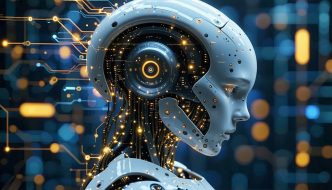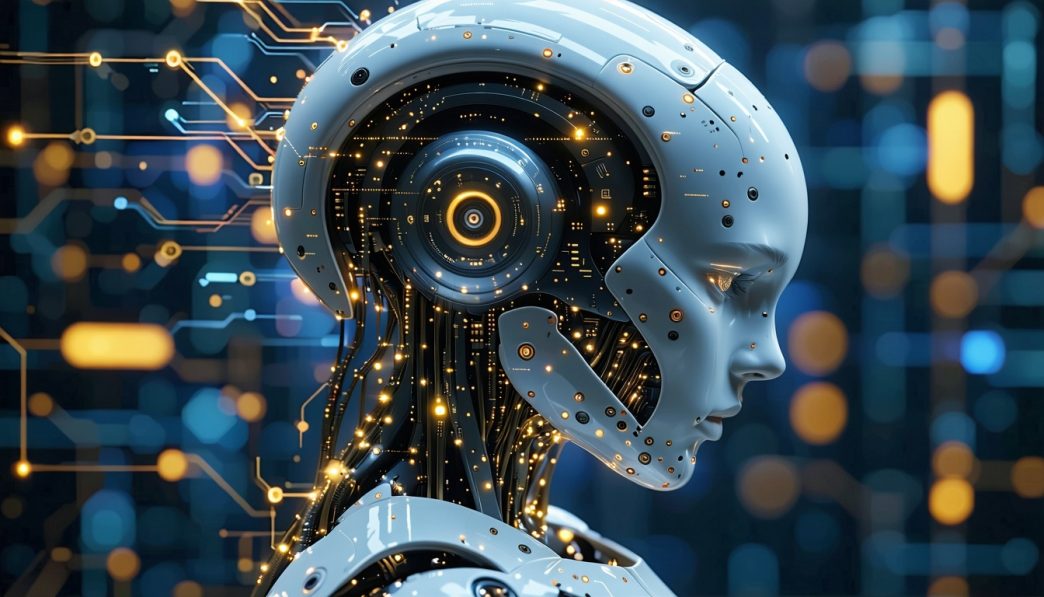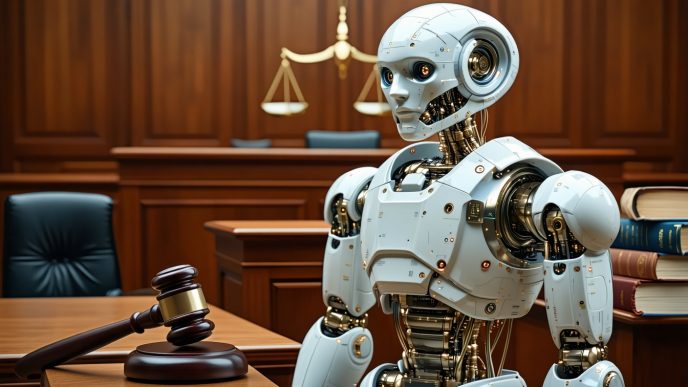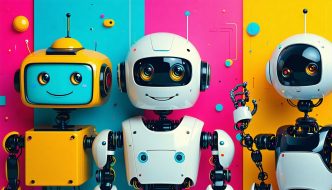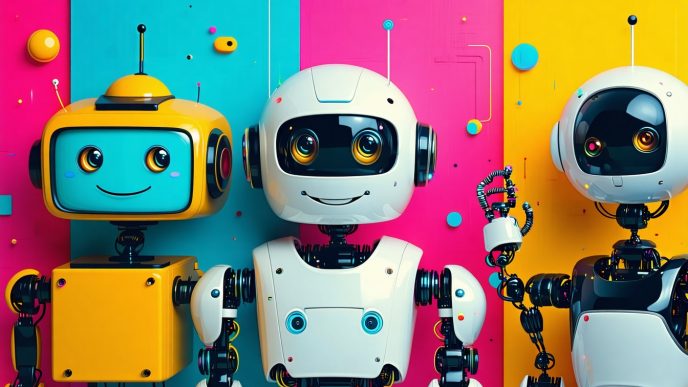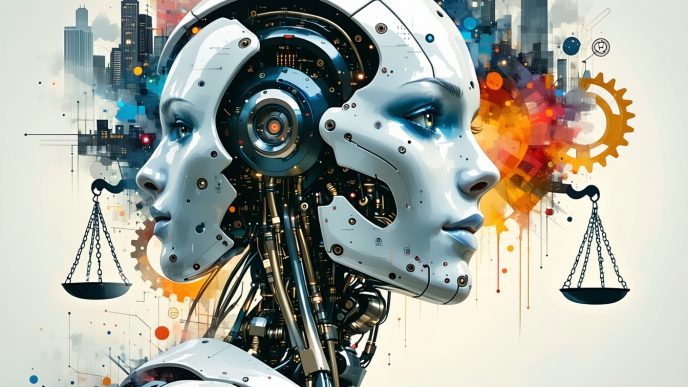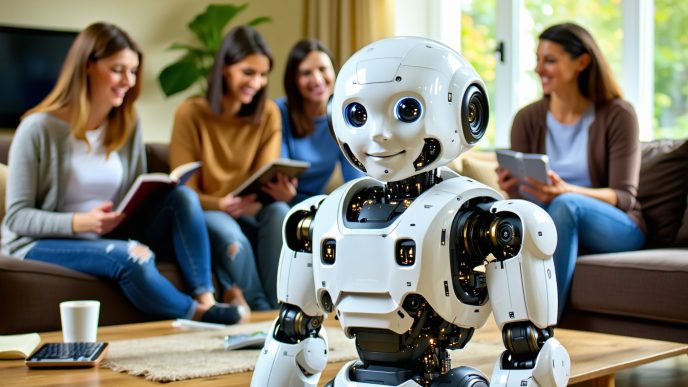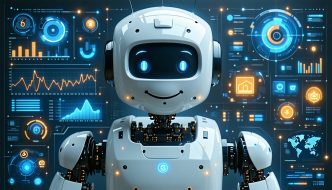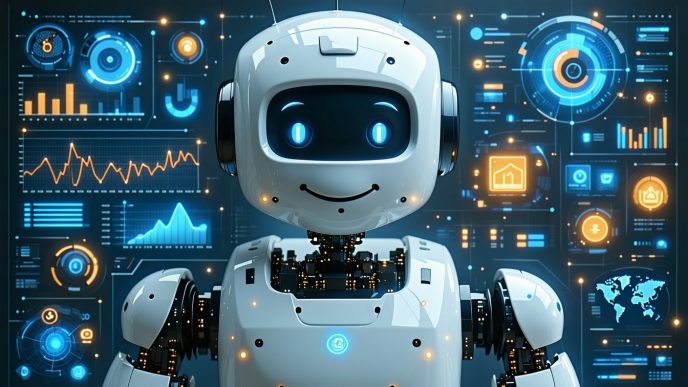Introduction to Neuralink and Humanoid Robots
Brief Overview of Neuralink
Neuralink is an innovative company focused on developing advanced brain-computer interface (BCI) technology. Founded with the aim of connecting human brains to computers, Neuralink’s technology seeks to enable seamless communication between the brain and external devices. By embedding tiny electrodes into the brain, it can facilitate data transmission, potentially transforming how humans interact with technology. The implications of such technology extend beyond medicine, as it may play a crucial role in the integration of humanoid robots.
Understanding Humanoid Robots
Humanoid robots are designed to resemble human beings in appearance and behavior. These robots often possess features that allow them to perform tasks similar to those of a human, making them versatile tools for various applications. They can be utilized in diverse environments, including healthcare, education, and even companionship.
| Key Features | Description |
|---|---|
| Physical Appearance | Often designed with a human-like shape, including limbs and a head, enabling them to engage in social interactions. |
| Mobility | Equipped with advanced locomotion systems, humanoid robots can walk, run, or navigate different terrains. For further details, refer to our article on humanoid robot locomotion systems. |
| Interaction | These robots can use voice interfaces, gestures, and facial expressions to communicate. For more information, check our article on voice interfaces in humanoid robots. |
The combination of Neuralink’s technology and humanoid robots presents exciting possibilities. By utilizing the capabilities of brain-computer interfaces, these robots may be able to enhance their interaction with humans and their environment. The integration of Neuralink could set the stage for a new era in robotics, where humanoid machines possess advanced cognitive functioning and adaptability.
The Potential of Neuralink in Humanoid Robots
The integration of Neuralink technology into humanoid robots presents exciting possibilities for enhancing their performance and capabilities. Understanding how this advanced technology can be utilized offers a glimpse into the future of robotics.
Integration of Neuralink Technology
Neuralink technology, known for its brain-computer interface, can be seamlessly integrated into humanoid robots to enable real-time data processing and decision-making. This technology allows these machines to interpret and respond to the environment in a way that mimics human cognition.
The following table outlines potential features facilitated by Neuralink integration:
| Feature | Description |
|---|---|
| Real-time Interaction | Enhances communication between the robot and humans. |
| Advanced Learning | Allows robots to adapt and improve their performance based on experiences. |
| Enhanced Sensory Data Processing | Processes complex sensory information for improved navigation and interaction. |
Humanoid robots equipped with Neuralink can leverage these capabilities for various applications, from domestic tasks to security roles. Such robots may include models like Tesla Optimus, which aim to transform human-robot interactions.
Enhancing Functionality and Capabilities
The functionality of humanoid robots can be significantly enhanced through Neuralink integration. These robots can develop improved cognitive abilities, refine their sensory perception, and execute precise movements.
| Capability | Improvement Description |
|---|---|
| Cognitive Abilities | Robots can analyze situations and respond autonomously. |
| Sensory Perception | Enhanced sensory inputs allow robots to operate in diverse environments. |
| Movement Precision | Improved motor skills facilitate tasks requiring delicate operations. |
Such enhancements would empower humanoid robots to perform both routine and complex tasks more effectively. Applications for these robots range from humanoid robots for home use to humanoid robots in elder care. With the ability to learn and adapt, these robots can become integral members of society, contributing to various industries, including healthcare and education.
By focusing on the potential of Neuralink technology, researchers and developers can explore new horizons in humanoid robot design and functionality.
Neuralink and Brain-Computer Interface
Exploring the concept of Neuralink in relation to humanoid robots opens up exciting possibilities in brain-computer interfacing. This technology aims to connect the human brain with robotic systems, enhancing their performance and capabilities significantly.
How Neuralink Interfaces with the Brain
Neuralink operates by inserting tiny electrodes into the brain, allowing it to read neural signals. This technology converts brain activity into digital data, which can then be used to control various robotic functions. The interface works by detecting specific patterns of neural firing associated with particular thoughts or actions.
| Key Aspect | Description |
|---|---|
| Electrode Insertion | Tiny, flexible electrodes are implanted within the brain to capture electrical signals. |
| Signal Processing | Neural signals are translated into digital commands that can be understood by robotic systems. |
| Feedback Mechanism | The system can provide feedback, allowing for a more intuitive interaction between the human brain and the robot. |
Such direct communication enables humanoid robots to react swiftly to human commands and potentially learn new tasks through neuron-based training.
Benefits of Brain-Computer Interface in Humanoid Robots
The integration of brain-computer interfaces, such as those developed by Neuralink, offers various advantages for humanoid robots.
| Benefit | Description |
|---|---|
| Enhanced Control | Direct brain input allows for more precise and responsive control of robotic motions. |
| Improved Learning | Robots can adapt and learn in real-time based on neural feedback, making them more effective in dynamic environments. |
| Increased Interaction | A neurological interface can foster deeper connections between humans and robots, paving the way for more sophisticated social interactions. |
| Assistive Capabilities | Humanoid robots can assist individuals with disabilities by interpreting their thoughts and performing desired actions. |
These innovations will not only enhance the functionality of humanoid robots but also promote their integration into daily life and various sectors, from humanoid robots for education to humanoid robots in healthcare. By bridging the gap between humans and machines, Neuralink and humanoid integration mark a significant advancement in robotics.
Advancements in Robotics through Neuralink
Neuralink’s integration into robotics presents numerous advancements, particularly for humanoid robots. This technology enhances various capabilities, making these robots more efficient and adaptable.
Improved Cognitive Abilities
Neuralink technology significantly enhances the cognitive functions of humanoid robots. By processing data in real-time, it enables these robots to learn and adapt quickly to new environments and tasks. This advancement allows for more complex decision-making processes, akin to human-like reasoning.
| Feature | Humanoid Robots with Neuralink | Traditional Humanoid Robots |
|---|---|---|
| Decision-Making Speed | High | Moderate |
| Learning Capability | Adaptive | Static |
| Problem-Solving Skills | Advanced | Basic |
Enhanced Sensory Perception
With Neuralink, humanoid robots gain improved sensory perception. This allows for better interpretation of sensory input, such as visual and auditory data. Enhanced sensory perception leads to a more interactive and responsive robot, capable of engaging with its environment more effectively.
| Sensory Input | Capability with Neuralink | Standard Capability |
|---|---|---|
| Vision | High-resolution analysis | Basic analysis |
| Hearing | Sound distinction | Limited recognition |
| Touch | Texture identification | Limited feedback |
Precision in Movements
Neuralink technology also contributes to the precision of a humanoid robot’s movements. The seamless communication between the brain-computer interface and robotic systems ensures more agile and accurate actions. This enhancement is crucial for tasks requiring fine motor skills and delicate movements.
| Movement Type | Precision with Neuralink | Conventional Robotics |
|---|---|---|
| Grasping Objects | Very precise | Moderate precision |
| Navigational Tasks | Highly accurate | Basic navigation |
| Interaction with Objects | Fine control | Clumsy interactions |
These advancements through neuralink and humanoid integration significantly impact the development of humanoid robots, allowing them to perform tasks with increased efficiency and human-like interaction. For more information about various types of humanoid robots and their applications, explore our articles on humanoid robots for home use and humanoid robots in healthcare.
Ethical and Moral Considerations
As the integration of Neuralink technology into humanoid robots advances, several ethical and moral considerations emerge. These issues encompass privacy and data security concerns, the impact on human-robot relationships, and the ethical use of Neuralink in robotic forms.
Privacy and Data Security Concerns
Neuralink’s ability to connect with a human brain poses significant privacy and data security challenges. The integration of this technology could potentially involve the collection of sensitive neurological data. Ensuring that this information is securely stored and accessed only by authorized users is crucial.
A breakdown of potential privacy issues includes:
| Issue | Description |
|---|---|
| Data Collection | Sensitive information regarding thoughts, feelings, and experiences may be collected. |
| Data Security | Risks arise related to hacking and unauthorized access to neural data. |
| Consent | Clear guidelines on obtaining informed consent from subjects must be established. |
Amid these challenges, developers must prioritize robust security measures to protect individual privacy and mitigate risks.
Impact on Human-Robot Relationship
The introduction of humanoid robots equipped with advanced Neuralink capabilities can fundamentally alter human-robot relationships. As robots gain enhanced cognitive abilities, their interaction with humans may become more complex.
Considerations for human-robot relationships include:
| Factor | Potential Impact |
|---|---|
| Emotional Bonding | Humans may develop emotional attachments to robots capable of understanding and responding to human emotions. |
| Social Dynamics | The integration of humanoid robots in society could shift social interactions and norms. |
| Dependency | Overreliance on robots for companionship or aid could lead to reduced human interactions. |
Understanding the social implications of these relationships is essential for creators of humanoid technology.
Ethical Use of Neuralink in Humanoid Robots
The ethical use of Neuralink in humanoid robots revolves around responsible design and application. Developers must consider how this technology is employed in society and its repercussions on human life.
Key ethical considerations include:
| Consideration | Focus |
|---|---|
| Responsible AI | Ensuring robots adhere to ethical guidelines in decision-making processes. |
| Autonomy | Establishing the level of autonomy granted to humanoid robots and how it affects human control. |
| Access and Equality | Addressing issues of accessibility, ensuring that technology benefits everyone equally, without creating disparities. |
The ethical implications of Neuralink integration in humanoid robots must be carefully evaluated, guiding developments toward responsible innovation. For additional insights into humanoid robots and their roles in society, visit our article on humanoid robots for companionship.
Future Implications and Possibilities
Exploring the future implications of Neuralink’s integration with humanoid robots reveals exciting possibilities across various domains. From enhancing social interaction to industrial applications, the potential is vast.
Social Integration of Humanoid Robots
The presence of humanoid robots powered by Neuralink technology could significantly impact social dynamics. As these machines gain the ability to understand human emotions and respond more naturally, they might become companions in everyday life. Robots designed for companionship could help alleviate feelings of loneliness for individuals in isolated environments, such as the elderly or those living alone.
| Potential Social Roles | Description |
|---|---|
| Companionship | Providing social interaction and emotional support |
| Education | Assisting with tutoring and mentoring |
| Healthcare | Offering patient monitoring and support, especially in elder care environments, see our article on humanoid robots in elder care |
Humanoid robots equipped with advanced communication systems could also facilitate smoother interactions in various settings, including homes and workplaces. Voice interfaces and emotional recognition capabilities in humanoid robots may help create stronger bonds between humans and machines, further integrating them into society. For more on interaction methods, refer to our article on voice interfaces in humanoid robots.
Potential Applications in Various Industries with Neuralink Integration
The integration of Neuralink with humanoid robots opens up new possibilities across multiple sectors. These advanced robots can enhance operations in healthcare, education, logistics, and more.
| Industry | Potential Applications |
|---|---|
| Healthcare | Patient assistance, surgery support, rehabilitation services |
| Education | Personalized learning experiences, tutoring systems |
| Logistics | Inventory management, order fulfillment, delivery automation |
| Home Services | Assistance with daily chores, smart home integration, see our article on humanoid robots for daily chores |
By utilizing Neuralink’s brain-computer interface, humanoid robots will be able to analyze complex tasks, adapt to user preferences, and improve overall interaction efficiency. In sectors like healthcare, these innovations could redefine patient care, making it more personalized and effective.
This exploration of Neuralink and humanoid integration signals a transformative era, with the potential to change how humans interact with technology in everyday life and various professional fields. By considering ethical implications and potential challenges, society can better prepare for integrating these advanced robots into daily routines.
